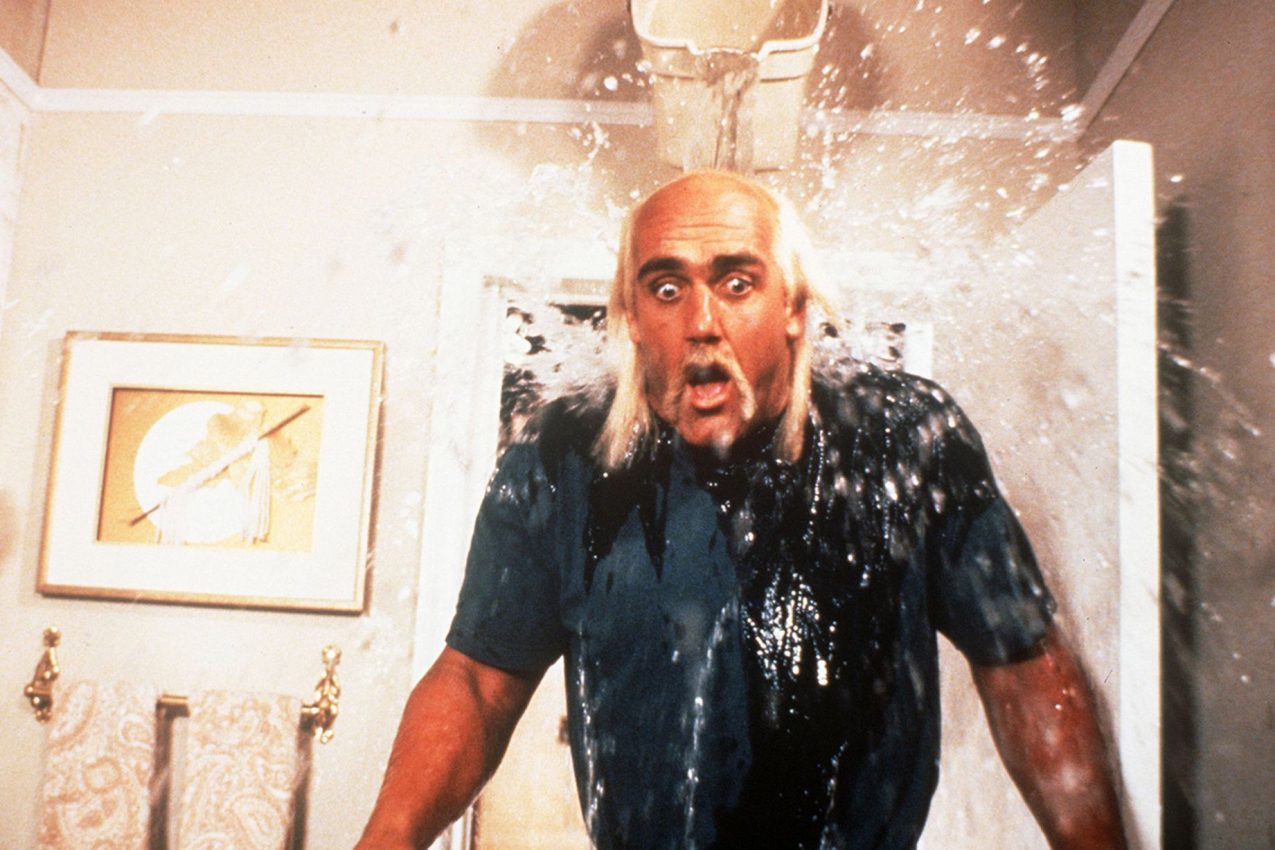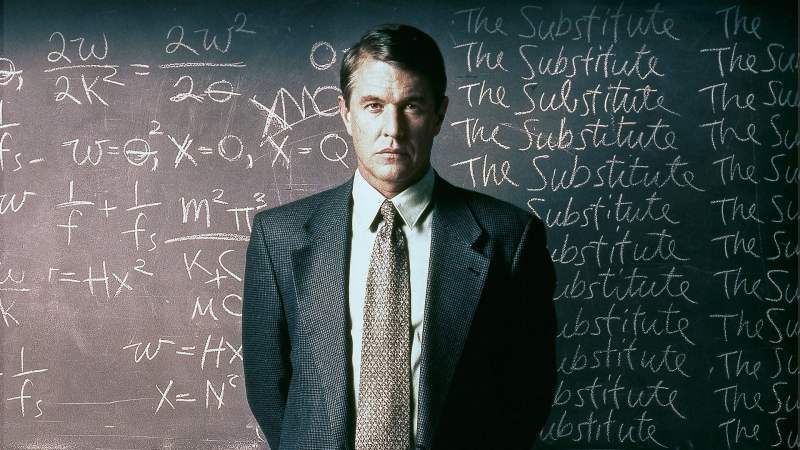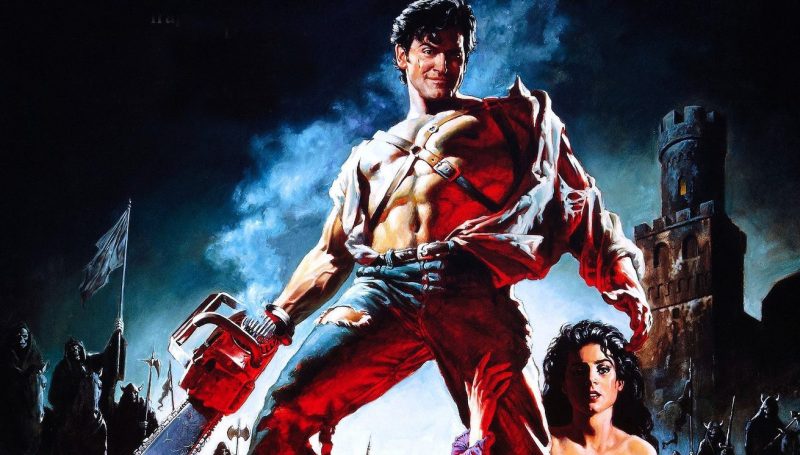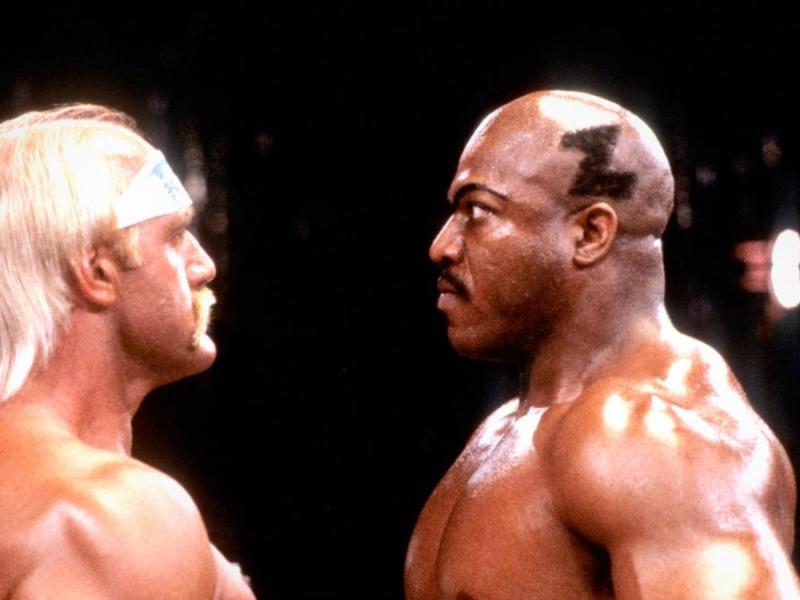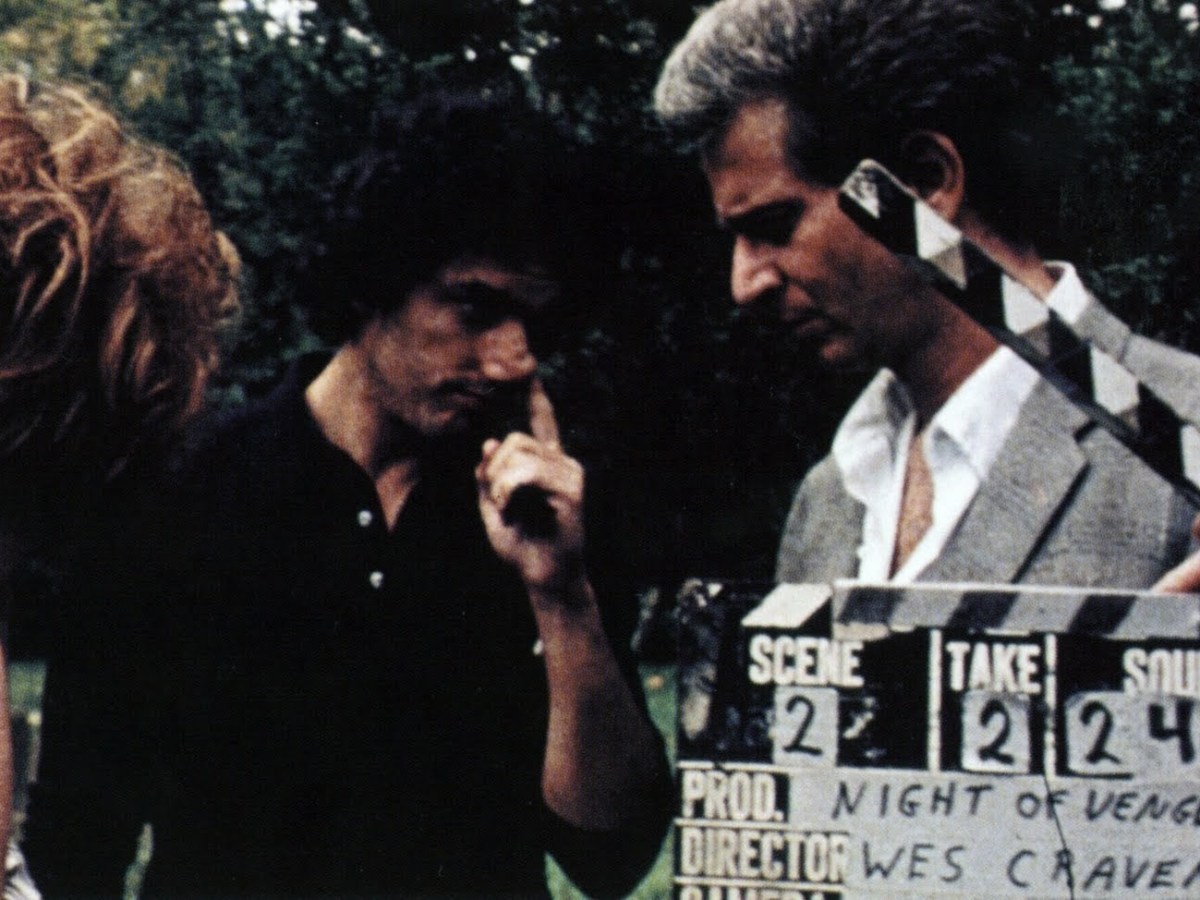
VHS Revival chronicles ‘The Hulkster’s’ fleeting movie career and the real-life scandal that all but killed it
The ‘Immortal’ Hulk Hogan: catchy moniker or self-fulfilling prophecy? For any wrestling fan of the latter part of the 20th century, both will ring true, but whether or not you bought into Hogan’s pro-America schtick, ‘The Hulkster’ was a bona fide superstar for more than two decades, and even now it is hard to dispute him as one of the most recognisable human beings on the planet. Back in the early 1980s, promoter Vince McMahon laid waste to the regional territorial system by taking pro wrestling global. Before the rise of pay-per-view, there was an unspoken code of ethics that saw regional territories exchanging talent, but Vince saw this as an antiquated philosophy and ran his competition out of business. This was in spite of his father’s warnings that he would end up ‘in the trunk of a car‘.
In order for wrestling to become a global success on the level McMahon craved, he needed superstars, and thanks to some savvy ties with MTV and pop sensation Cyndi Lauper, Vince was able to find a platform for his larger-than-life talent roster in the form of the inaugural Wrestlemania, a spectacular supershow that is still going strong today. The then World Wrestling Federation gave us a plethora of colourful personalities who would constitute wrestling’s ‘Golden Age’. Andre the Giant, Rowdy Roddy Piper and Captain Lou Albano were all huge draws in their time, but Vince required a marquee attraction who would become the trademark of his blossoming product, and that attraction was Hulk Hogan.
Known for his crowd-pleasing edict of ‘say your prayers and take your vitamins’, Hogan would gain unprecedented popularity during the late 1980s, but after a highly publicised steroid scandal saw the public lose faith in their flag-flying hero, Hogan was forced to take a grappling hiatus, and for a giant personality such as his, Hollywood would prove the perfect side project. By the time he left the WWF in 1993, the musclebound ‘Hulkster’ had already dipped his toe in the acting waters, however choppy they may have been. A known detractor of old-school southern ‘wrasslin”, Vince had always envisioned his wrestling product as being closer to the movie business, and producing films was the logical next step.

Hogan and McMahon would get the ball rolling way back in 1982, a red-hot Hulkster starring in Sylvester Stallone’s smash Hollywood sequel Rocky III. Hogan would tap into his wrestling persona for his portrayal of Balboa opponent ‘Thunderlips’, a thinly-veiled Muhammad Ali clone who would prove interesting enough fodder for the movie’s first act. Hogan’s appearance was huge for both Hogan and McMahon as the latter took his first steps to mainstream wrestling domination. Hogan had neither the intention or star power to take his acting career any further at that juncture, but the pair had gotten a taste of what Hollywood had to offer them commercially, and the two would return to the fray fully armed a half decade later.
In 1989, at the peak of Hulk’s popularity, McMahon would finance the infamous No Holds Barred, a production that blurred the lines between pro-wrestling and cinema. It made sense to go with a WWF-themed screenplay for someone who was new to the industry, and in Hogan McMahon had a marquee name that would sell tickets regardless. According to those who are close to him, Vince is a known admirer of toilet humour, as lifelong wrestling fans will only be too eager to attest to. So detached was millionaire McMahon from reality that the movie portrays its everyman audience as beer-swilling, pot-bellied morons, while wild pigs and mud fights constitute Saturday night entertainment for America’s working stiffs. As well as alienating its majority audience, the movie is also incredibly sexist, although the sight of a lovelorn Hulkster wearing pink panties almost serves as justification for director Thomas J. Wright’s cinematic bilge pump.
In the movie, Hogan plays Rip, a pro wrestler who becomes the object of an evil executive’s commercial desires, and though the character was clearly a dig at WWF rival and media mogul Ted Turner, what we see onscreen is pretty much the mirror image of McMahon himself. Cocaine is a hell of a drug, one that was rife in professional wrestling during the 1980s, and No Holds Barred may just be its cinematic manifestation. Author Matthew Randazzo would write of McMahon in his book Ring of Hell: The Story of Chris Benoit and the fall of Pro Wrestling: “According to numerous sources, McMahon had a great love affair with cocaine that may or may not have ever subsided; he liked to brag with apparent justification that ‘I can snort as much of that stuff as anyone can put in front of me and never get hooked.’ Never underestimate the delusional powers of ego.

Asides from the movie’s puerile message, unabashed sexism and flagrant disrespect of just about every ethnic and social group one could dare to imagine, the company’s first attempt at cracking Hollywood was blunted by Hogan himself, who would basically bring a watered-down version of the ‘Hulk’ gimmick to the silver screen. That kind of thing may fly in the pro wrestling leagues, but when it comes to cinema people expect just a little more dynamism, a fact that a glut of subsequent directors would attempt to address. Inevitably, No Holds Barred was a creative and commercial disaster, and by the time the dust had settled the company had barely broke even. So confident was Hulk in his ability to draw on the silver screen that he had promised to waver his fee if the movie proved a failure. As rumour has it, he never did return that money.
Due to the failings of the WWF’s first financial punt, the company that would one day become known as WWE films was put on the backburner, but their colossal attraction wasn’t done yet. After all, Hogan wasn’t the worst aspect of a movie that would be critiqued as being ‘charmless, stupid and badly made’. With some real talent behind him, there was every chance Hogan would prove to be the next Schwarzenegger. Back in the early 90s, Arnie would make a conscious shift to family-friendly roles as he looked to ingratiate himself with political circles, and Hulk would take more than a leaf out of the Austrian’s book as he attempted to hang up his wrestling boots for less physically taxing sources of income. One of the reasons No Holds Barred did such bad numbers was that it was both puerile and violent; an insult to adult movie goers and too excessive for the peewee audience who bought into Hogan’s fight for your freedom mantra. Not for the first time in his storied career, the risk-taking McMahon was the culprit of a huge marketing misfire.
Hogan’s next flirtation with Hollywood superstardom came in the form of a brief, fourth wall-breaking meta cameo in Joe Dante’s Spielberg-produced Gremlins 2: The New Batch. At this point, Hogan was more than confident in making the transition from wrestling personality to Hollywood megastar, so he was delighted when he received a call informing his that Spielberg wanted him in his next movie, though from the way he described the incident in his book, it was clear that Hulk had very little knowledge on how to make that transition work, or even a basic understanding of the way movies worked.

“My next film came out of nowhere and started when my agent called up and said ‘Steven Spielberg wants you in his new movie, it’s called Gremlins 2: The New Batch. It’s not a very big part and there’s not a lot of money in it, but you’re gonna work with Spielberg. If I were you, I wouldn’t turn it down’,” he would write. “I said, ‘I’m there’. He told me it would be two days of filming, just a cameo role. I could handle that. I was gonna work with Steven Spielberg… I would have a chance to show him I wasn’t just a yelling, screaming, peroxide blonde maniac. There was more to me than that. I was hoping he might say, ‘Hey, this guy might have something. Maybe I could make him a transvestite, or a bad guy in my next film. Or a transvestite and a bad guy. Maybe I could stick a couple of bolts in his neck and make him the next Terminator.” Surprisingly, none of that happened. In fact, Hogan didn’t even get to meet Spielberg, which was probably a good thing. For both parties.
Hulk’s first lead mainstream role away from the WWF came in the form of 1991′s Suburban Commando. This time Hogan was free of McMahon’s aloof persuasions, with Back to the Future‘s Christopher Lloyd and The Shining‘s Shelly Duvall adding some much needed pedigree to proceedings—with just the right touch, it was believed that Hogan stood a fighting chance of finally breaking into the Hollywood mainstream. By the turn of the 90s, Lloyd and Duvall were hardly fighting off casting agents with a stick, and in Suburban Commando they presumably saw their chance to snatch a quick payday.
Suburban Commando would become the blueprint for all Hogan movies: gentle giant overcomes awkward boundaries to win the hearts of disillusioned kids, and with his position as wrestling’s biggest, most recognisable ‘babyface’, it seemed like the best course of action for soulless production companies looking to leech off the WWF’s popularity. Unlike No Holds Barred, Suburban Commando was aimed at the impressionable preteen demographic; those most likely to swallow any old piece of crap tied to a summer marquee. I was one of those children, and to say I was disappointed is a huge understatement. The Hulkster we all knew and loved was strangely free of his python-flexing charisma. What we got instead was a lost child seeped in corporate ambition.

A deftly edited trailer can sell any old rubbish, and that was certainly the case with Suburban Commando. For those kids glued to the ‘coming soon’ trailers at their local theatres back in the spring of 1991, what we saw was an intergalactic action comedy featuring the lovable mad scientist from the hugely successful Back to the Future movies. What they didn’t know was that the two minutes they were treated to consisted of the movie’s only real action. This was bland, lazy filmmaking; a real punch in the gut for the millions of naive juveniles who rushed to theatres in their droves with the promise of finally seeing their favourite wrestler produce the onscreen goods. Hulk may have been limited as a fledgling quasi-actor, but with Suburban Commando he was once again plagued by a lousy screenplay which had already done its job by casting Hogan, and felt like it needed to do very little else.
In his review of the movie, legendary film critic Roger Ebert would write, “Somebody was asking the other day, do I ever get tired of going to the movies? Naw, I said, I love movies and so some days it’s not really a job, it’s more of a lucky break. But I wasn’t feeling lucky the day I saw “Suburban Commando,” and you know what? By golly, by the time it was over, I was feeling kind of tired of going to the movies.
So what was it about the larger-than-life Hulkster that made his big screen transition so flaccid? For one thing, professional wrestling was a different entity back then. Far from the slick production juggernaut it is today, the spectacle of old still clung to its carny roots, and wrestling promos were not meticulously scripted by ex-Hollywood writers like they are in the 21st century. Hogan may have been the name that changed wrestling from a rough and tumble regional product to a glamorous global vehicle of overblown cartoonery, but he plied his trade in a previous era, and wrestlers were armed with nothing more than cues before ad-libbing their pre-grapple spiel. For this method there were none better than The Hulkster, but a detailed script was a different prospect entirely.
For many kids, Suburban Commando was their first lesson in marketing puffery. Not only did producers consciously manufacture this kind of excrement, they had the gall to force-feed it to a generation, and you best believe they weren’t through yet. Sticking to their ‘surrogate father saves the day’ concept was the right direction for someone of Hogan’s commercial mode, but there was a problem unrelated to movies, and it came in the form of the World Wrestling Federation’s infamous steroid scandal.

At the turn of the 90s, the WWF’s once stratospheric popularity was experiencing something of a downturn. Fans were getting tired of Hogan’s old routine, and when new champion Jim ‘The Ultimate Warrior’ Hellwig failed to trigger a turnaround, Vince would revert to his old dog in order to get the job done. The problem was, not much had changed in the eyes of fans, and following a catastrophic Hogan-led Wrestlemania that saw the event moved from the 93,607 capacity Los Angeles Memorial Coliseum to the adjacent and much smaller Los Angeles Memorial Sports Arena, a move inspired by a fan boycott due to a wrestling ‘angle’ that exploited the Iraqi War, the bad times had officially arrived.
Of course, this was just the icing on the cake. Behind the scenes, McMahon and Hogan were in all kinds of trouble with the FBI, who according to former McMachon Ally, producer, and Something to Wrestle With podcast personality Bruce Prichard, were hellbent on destroying Vince and the WWF, a “witch hunt” led by long-time wrestling detractor and New York Post mouthpiece Phil Mushnick, who would write of McMahon, “Never will you encounter a human being more cold-blooded, more devoid of humor and propriety than Vince McMahon, America’s foremost TV babysitter. In your wildest, most twisted dreams, you won’t meet up with the likes of McMahon, a miscreant so practised in the art of deception, the half-truth and the bald-faced lie as to make the Artful Dodger appear clumsy. A George Steinbrenner or a Don King pale by comparison. Indeed, Hannibal Lecter is the only fictional character who comes close”.
Strong words. Comparisons that should probably be taken with a hefty pinch of salt from a man with a very personal vendetta against McMahon and his wrestling product, but whoever you were willing to believe, the drug and sex scandals tied to the WWF were very real. How much of what was being said was true is up for debate. After all, Vince had many enemies going back to the end of the territorial system, and anyone and everyone were crawling out of the woodwork to grab themselves a chunk of the commercial pie, as well as payoffs from sensationalist TV shows, corrupt lawyers looking to gain leverage and a Federal Government hellbent on bringing McMahon to justice.

What Vince needed was for his stars to play the game, and play by his rules. The majority of them acquiesced, but the most essential of those allies, the man who had eaten the lion’s share of the steroid scandal due to his hypocritical drug-free slogans and image as a hero to kid’s the world over, would go into business for himself, knowing that his movie career and vast fortune depended on it. Just as Hogan’s face was popping up on movie marquees the world over, he decided to give what many expected to be a warts-and-all interview about his steroid abuse that would garner sympathy from audiences. Instead, the larger-than-life Hulk flat-out denied his continued drug use. For those watching around the world, the jacked-up star’s claims were hard to swallow.
With McMahon facing serious jail time, Hogan would part ways with the WWF and lie low until the whole scandal blew over, but with McMahon acquitted and the blame falling squarely in the lap of corrupt physician and WWF scapegoat Dr George Zahorian, 1993 would represent a new dawn for both the WWF and the Hulkster, albeit it a fleeting one. Following years of courtroom battles and bad press, the WWF were forced to re-build their reputation and talent roster from the ground floor up, and, at least for a few years, Hogan was no longer the company’s golden goose. Audiences had lost faith in him.
Hogan’s next movie was 1993’s Mr Nanny, a film that would refuse to deviate from the Suburban Commando formula. The story of an ex-wrestler-turned-bodyguard who becomes a reluctant hero to troubled kids, the film represented a new low for the waning superstar, and despite his seeming reluctance to learn even a modicum of his chosen trade, there perhaps wasn’t an actor alive who could have made this movie passable. Not only is Mr Nanny utterly devoid of charm, it struggles to connect on even the most basic human level. Subjected to a whole host of borderline-evil, Home Alone style pranks by a pair of rich kid siblings who inspire hatred rather than sympathy, Hogan comes across as stupid, not lovable, and the screenplay’s soulless, monetary ambitions makes Hulk’s previous efforts seem like Disney at its finest. Crass, cack-handed, and bizarrely paced, Mr Nanny would prove an unmitigated critical and commercial disaster, recouping only $4,247,162 of its $10,000,000 outlay, and all but killing Hogan’s mainstream career. In the right hands, this formula would have been perfect for the likes of Hulk, but no serious production would buy into his gentle giant potential, and as woeful as Terry Bollea was as a mainstream actor, the jackals who saw him as a guaranteed quick buck had nothing but disdain for their audience.
Those jackals would take yet another commercial punt, casting The Hulkster as a cruel millionaire who believes himself to be Santa Claus after a bump on the noggin leaves him with a case of amnesia—the convenient kind that will ultimately show him the error of his ways. Once again, the notably trimmed-down, post-steroids Hulkster played a big, dumb, reluctant hero, and once again his attempts fell flatter than a pancake. Hulk’s latest punt at silver screen success was again the result of wrestling-based popularity, the once babyface grappler turning heel to forge popular onscreen faction the New World Order having jumped ship to headline McMahon rival Ted Turner’s World Championship Wrestling, a move that would lead to the sport’s next financial boom period.

A few made-for-TV efforts, small cameos in movies such as Leslie Nielsen’s flaccid Naked Gun rip-off Spy Hard, and a short-lived TV show called Thunder in Paradise aside, Hogan would all but fade from the fringes of Tinsel Town in the ensuing years. After headlining one more Wrestlemania against Dwayne ‘The Rock’ Johnson in 2002, a pro-wrestler-turned-actor who would ironically go on to be the biggest name in all of Hollywood, the ageing Hulkster would continue to make sporadic appearances in wrestling and even landed his own family-based reality TV show until a series of high-profile scandals put his name value on the back burner once more.
Wrestling’s larger-than-life personalities and Hollywood were seemingly meant for one another, particularly in the hedonistic days of Reagan’s America. Former governor of Minnesota Jesse ‘The Body’ Ventura would leave his mark as a notable Arnie accessory in high-profile movies such as Predator and The Running Man, Roddy Piper would front John Carpenter’s political satire They Live and ‘The Rock’ would later take the wrestling-movie connection to a whole new stratosphere. There were others, Spectre’s Dave ‘Batista’ Bautista being the most notable, and WWE films continues to cast its marquee stars in decidedly second-rate productions as McMahon holds onto his dream of turning his travelling circus into something resembling a film studio. Ironically, it never quite happened for the most recognisable wrestling personality of them all. Sometimes, saying your prayers and taking your vitamins just isn’t enough.






